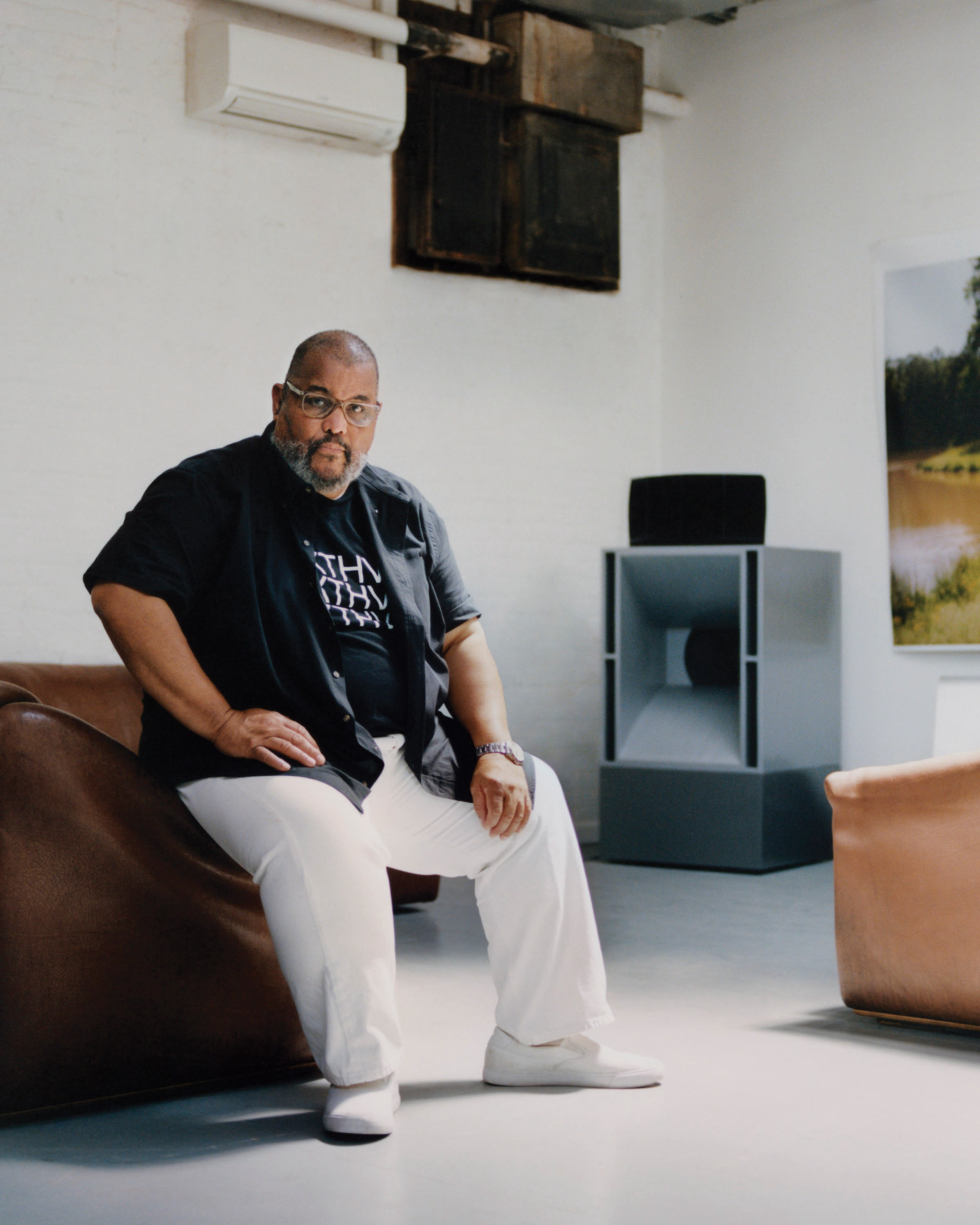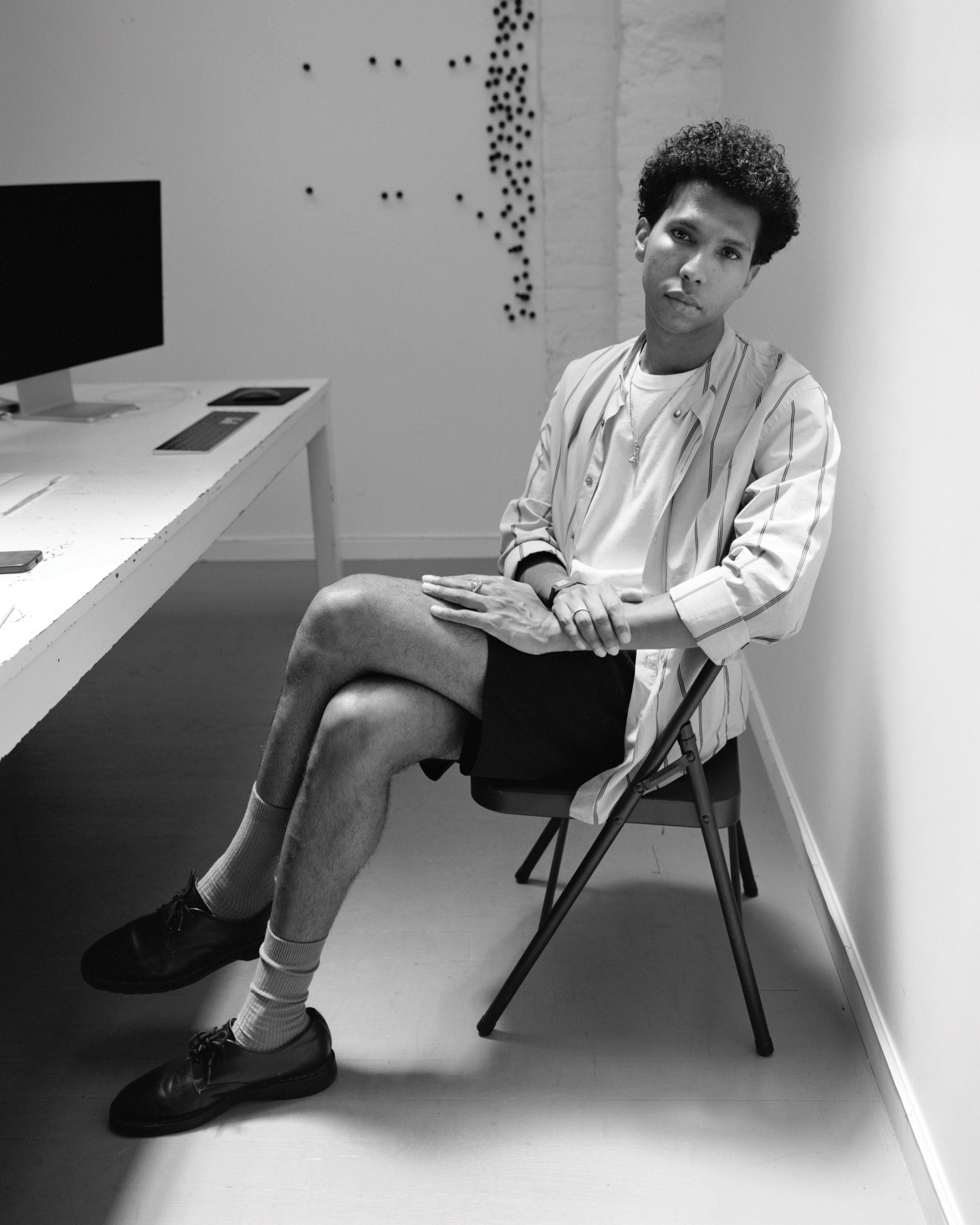Drew Sawyer: Mentorship is often intergenerational, yet the photography and art worlds have changed so dramatically over the past 50 years, especially with regard to access to information and ways of distributing work. How do you think your own understanding of photography was shaped by when you first started to think about or engage with the medium?
Dawoud Bey: I came into the field in the mid-1970s. At that point the battle over whether photography was or was not indeed a fine art had been fought and won, but we all still had the consciousness of it. We were still standing in a highly contested space in terms of our legitimacy. There weren’t a lot of places to see photographs in New York, but there were a few. The first place I saw photographs of Black people hanging on the walls was the Metropolitan Museum of Art. That helped shape my thinking and aspiration.
DS: Tyler, you’ve talked about Tumblr being formative for so many people who grew up in the 2000s.
Tyler Mitchell: Growing up in Atlanta, my parallel to your formative moment at the Met was really the Internet—websites where encyclopedic swaths of images were being thrown at teenagers, who could curate their own individualistic styles, aesthetics, and interests. Whether it was interior design or photography or art, all of these decontextualized made me fall in love with images in a wider sense. Now we are just understanding how that’s percolated into today’s culture of images that exist online, in gallery and museum spaces, and printed and published. I’m right at the beginning of grappling with where and how I want my images to live.
DB: It’s interesting to contemplate the initial experience of the work via the Internet, because there’s such a glut of information there, which, obviously, provides a rich field of inquiry in terms of where you might exist or what you might respond to. It also conspicuously leads to this idea of the “photograph” as the image. Coming to the work as I did in museums and galleries, I had an immediate engagement with the photographic object, which is something that I still make a very real distinction about. When you look at my prints, you’re not looking at a picture, you’re looking at a photograph. That relationship to the physical photographic object is something that is very foundational in my practice. It’s the physical realization of a set of ideas and something that has been deeply invested in from the outset.

DS: But a lot of photographers have also made their work for the page, whether that's a photo book or magazine.
TM: That makes me think of the question of “commissioned” v. “personal work.” I’ll put quotes around both.
DB: That’s the way it’s always been talked about—your “personal work.”
TM: Now we have a generational moment—an opening up of the floodgates so to speak—of more artists being commissioned to make work for brands, companies, projects, things like that. What does that mean? Is it art or is it not? I’ve been insisting on leveling the boundaries of these two things that we have been programmed to think as totally separate or that one is far more superior. I’m really excited about the possibility that commissioned works—at least in the ways in which I’ve been doing them—are deeply personal. Sometimes in the boundaries and the constraints and the cultural contexts, they can spark so many conversations that personal work can, too.
DB: Throughout the history of the medium that question has filtered through it. Certainly the interesting thing about photography is that if you do it well, you can do it for anyone who’s willing to pay. I’ve done it myself—it hasn’t been as conspicuous as Beyoncé on the cover of a global magazine—I just don’t talk about it. I’m not invested in it. Most of the photographers that I came up with tended to keep a very strict firewall between the two. You did not want to be known for that other work because somehow there could be a curator out there that might potentially have issues. “Just who are you anyway?” I wanted it to be quite clear about who I was—someone who wanted to be engaged in a very deep conversation with photography as a fine art.
DS: I'm curious if you think that part of this shift that you bring up is also because art institutions have lost some of their shine. Of course, there have been long criticisms about gatekeeping, elitism, classism, racism, sexism, et cetera, but there has also been an expansion of other platforms, other ways that one can support themselves or distribute their work. It seems most people no longer have strong ideological positions on the types of culture they consume or a belief that "art" is somehow beyond it.
DB: Yes, all of that is changing.
TM: There’s always going to be a symbiosis and relationship between artists and institutions, between artists and magazines or publishing platforms. But I think you’re right, we’re seeing these online communities of factions of friends come together and create their own projects. There is a changing landscape. Several years ago I worked as an intern at the photo agency that now represents me. My job was to create physical portfolios of all the fashion photographers’ work. I had to go through every magazine—every periodical that was published around the world— and make tabs of which artists had worked on what stories. Then I would make tear sheets and create portfolios. I could count on two hands who was creating 90 percent of the images that our culture was experiencing on a day-to-day basis. The conversation since then has gone from two hands to hundreds of photographers making projects and exciting things around the world. There’s been a lot of work done, but my question remains: Is it possible for a photographer to level this boundary?
DB: Remember, there is a very long history that supports exactly your kind of practice. Edward Steichen, who was one of the greatest proselytizers of photography as a fine art [in the early 20th century], also did fashion photographs. They were beautiful, they were quite elegant. Genre within photography can be a very fluid conversation. There will always be those naysayers. I don’t know if that’s a generational thing or if that’s a question of academic bias that you inherit, but it’s definitely changing. All of us need to form a community of support around our practice. There are people that I work with now that I’ve known for 40-plus years. When you’re a part of a community for that long, inevitably people start to move around and that creates opportunities for the others that are a part of it. That’s why the notion of community and continuing to not just maintain but to keep leaning into your own work and trying to raise the bar in the way that only you can do for yourself is so important. There are people who ask me if I think I’ll go back to making portraits again. I say, “Maybe, I don’t know.” I do the work that I feel that I need to do at that particular moment. I have to say, the portrait that I did of you, Tyler, was the first portrait—actual portrait, working with someone in front of the camera—that I’ve done since the [The Birmingham Project] ten years ago.
TM: Drew, I need you to imagine that you’re sitting in front of Dawoud Bey’s camera, and he drops that fact as he’s about to take his first picture of you.

DS: You're saying your jaw dropped?
DB: I’m very much aware that [portraiture] is something that I can do and that I do do very well. But that’s not what I choose to do. It’s not the work I want to make at this particular moment.
TM: There’s so many ways to explore photography stylistically. In the same way that a musician or painter or sculptor might delve into multiple conversations that they’re having with their practice, so should photographers.
DS: Dawoud, even strictly within the realm of portraiture, your work wrestles with landscape, social space, and history. I think of you as more of a social photographer who is interested in place as much as people.
DB: It is certainly been present in my work from the outset. Going back to Harlem in the ‘70s, I was there because of my family’s history. My mother and father met there and then left Harlem when I was born. I wanted to go back and explore a place that I’m a part of but that I hadn’t physically been a part of. Even in my street portraits there’s always been an attention to the narrative of space. There was nothing spontaneous; the space itself was always a part of the construct of the narrative of the work. [Looking back now] I don’t see this as a radical shift so much as it was a new language that I had to learn. How to make a different photograph that did not depend on the human presence but on the presence of space success. I realized that the picture starts and stops where the narrative starts and stops.
It took me some very frustrating moments to figure out the language for the work that I’m making now. It wasn’t easy at all, but that didn’t stop me. The work has to be driven by your own sense of integrity, by what the thing is that you need to talk about, not by some external forces or the mark of anything else.
TM: I’m starting to think about forming bodies of work almost like—and not to be so literal but—a film. There’s a thesis or a preoccupation. Space and narrative history, those are at the root of all of your pictures. That should always be the case with any photographer. Maybe those preoccupations grow, maybe they graduate, maybe they change over time, but they’re not fixed. Black space, Black landscape in the south, familyhood, those are my interests. I then start to think about what the wide shot of that looks like, so to speak; the extreme close-up; the little narrative moments. You could break that down into categories of facticity, but I’m saying they are fragments of a larger thing. Any artist can have two sentences about what their work is, but within that would be 25 different languages of how to say it. The beauty of photography is you’re able to do that in multiple contexts.
DB: It’s about taking an idea and extending that into as many photographs as possible where you feel like you have really exhausted the possibility of how many ways you can re-enter the conversation.
TM: A movie director is trying to make the same thing over and over again in different ways. Look at any of the greats like Spike Lee—down in Atlanta at Morehouse for School Daze or a block in Bed-Stuy like in Crooklyn or Do The Right Thing. The same logic applies to photographers. We’re trying to make variations of the same picture or say the same ideas in different languages.
DB: I’ve had the opportunity to have a retrospective exhibition, which included work from 1975 up to 2020. There’s a sensibility that actually runs through the work even though there are different kinds of photographs. That’s when you realize that there’s just one thing that you’re interested in, and you’re trying to find different ways to make it resonate.










 in your life?
in your life?

